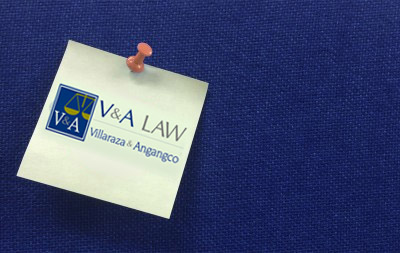By Franchette M. Acosta, Senior Partner, Villaraza & Angangco
The Philippine Competition Commission (PCC) released on 23 March 2017 the PCC Merger Review Guidelines (Guidelines). These Guidelines explain the key concepts found in the Philippine Competition Act (Act) on the matter of prohibiting mergers or acquisitions that substantially prevent, restrict or lessen competition in the market.
Notably, the Guidelines identify the SSNIP test as a methodological tool to define the “relevant market”, at least in the context of a merger and acquisition review. SSNIP stands for “small but significant and non-transitory increase in price”. The term relevant market is in fact used repeatedly throughout the Act and not only in the context of prohibited mergers and acquisitions. Section 14 of the Act per se prohibits anti-competitive agreements, and in this connection, Section 26 of the Act states that in determining whether anti-competitive agreement has been entered into, the PCC shall define the relevant market. Section 15 prohibits the conduct of a market dominant entity that substantially lessens competition within a relevant market and Section 27 considers the share of the entity in the relevant market to determine if it has market dominant position. Again, relevant to this is Section 26 which states that in determining whether anti-competitive conduct has been committed, the PCC shall define the relevant market. Finally, Section 20 prohibits mergers or acquisitions that substantially prevent, restrict or lessen competition in the relevant market.
The Act itself and the subsequently issued Implementing Rules and Regulations provide general definition of relevant market. Section 4 of the Act takes into account the “relevant product market” and the “relevant geographic market” in its definition of relevant market. Relevant product market comprises all goods and services that are regarded as interchangeable or substitutable by reason of characteristics, price and usage. Relevant geographic market is the area in which the entity concerned is involved in the supply and demand of goods and services, in which the conditions of competition are sufficiently homogenous and which can be distinguished from neighboring areas because the conditions of competition are different in those areas. Section 5 of the Guidelines identifies factors to be considered when identifying the relevant market, namely, substitution of goods or services with goods of domestic or foreign origin, cost of distribution of the good or service, cost and probability of users or consumers seeking other markets, and national, local or international restrictions.
However, these definitions are potentially open to differing interpretations and conclusions. By introducing a specific methodology, the Guidelines aim to contribute consistency and predictability in the substantive merger analysis. To simplify, the Guidelines provide:
“‘SSNIP’ The Commission applies the SSNIP test to a candidate market of each product produced or sold by each of the merging firms, assessing what would happen if a hypothetical monopolist of that product imposed at least a SSNIP on that product, while the terms of sale of all other products remained constant. If the hypothetical monopolist would not profitably impose such a price increase because of substitution by customers to other products, the candidate market is not a relevant product market by itself. The Commission then adds to the product group the product that is the next-best substitute for the merging firm’s product and apply the SSNIP test to a candidate market of the expanded product group. This process continues until a group of products is identified such that a hypothetical monopolist supplying the product(s) would be able to exercise market power and profitably impose a SSNIP in the candidate market. The relevant product market generally will be the smallest group of products that satisfies this test.”
The SSNIP test is used to identify a relevant product market (considering demand and supply substitution), and a relevant geographic market. The Guidelines note that the common benchmark in other jurisdictions for SSNIP is 5% to 10% price increase which could last for the foreseeable future.
The changes in market concentration in a relevant market may highlight the need to review a transaction. Increased market concentration resulting from transactions could be an indicator of loss of competition within a relevant market. The Guidelines identify the Herfindahl-Hirshman Index (HHI) as a tool that could be used to interpret changes in market concentration. A higher HHI is an indication of higher concentration in the market. The Guidelines provide that while not conclusive, both moderately and highly concentrated markets warrant scrutiny, with the difference that for highly concentrated markets, persuasive evidence is required to show that the merger is unlikely to enhance market power.
After identifying a relevant market, and after applying market concentration analysis which showed significant competition concerns, the substantial inquiry that follows is whether the merger or acquisition substantially prevents, restricts or lessens competition, or leads to an “SLC”.
A merger leads to SLC if, as a result, the unilateral ability or incentive of a merged firm to exercise market power independently is enhanced or created (Unilateral Effects). A merger also leads to SLC if it increases the likelihood that the firms in the market will successfully coordinate their behavior or strengthen existing coordination in a manner that harms competition (Coordinated Effects). The Guidelines immediately qualify that competitive effects analysis is fact-specific that requires assiduous consideration of qualitative and quantitative evidence.
While the Guidelines focus on horizontal mergers, it may also be used to analyze non- horizontal mergers when applicable. The Philippine Competition Commission intends to release guidelines for non-horizontal mergers.
Sources:
- Philippine Competition Act (Republic Act No. 10667, dated 21 July 2015) Implementing Rules and Regulations of the Republic Act No. 10667, dated 31 May 2016
- PCC Merger Review Guidelines, dated 23 March 2017
[This is article is prepared for information purposes only and should not be construed as legal advice.]
 Franchette M. Acosta
Franchette M. Acosta
Senior Partner
Villaraza & Angangco
E: fm.acosta@thefirmva.com


